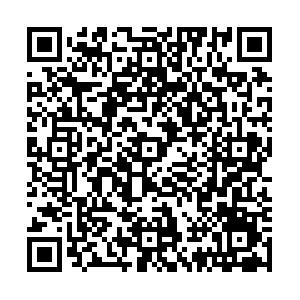|
[1]
|
Luenberger D G. Observers for multivariable systems. IEEE Transactions on Automatic Control, 1966, 11(2): 190-197[2] Darouach M, Zasadzinski M, Xu S J. Full-order observers for linear systems with unknown inputs. IEEE Transactions on Automatic Control, 1994, 39(3): 606-609[3] Darouach M. Complements to full order observer design for linear systems with unknown inputs. Applied Mathematics Letters, 2009, 22(7): 1107-1111[4] Chen J, Patton R J. Robust Model-Based Fault Diagnosis for Dynamical Systems. Norwell, Massachusetts: Kluwer Academic Publishers, 1999[5] Corless M, Tu J. State and input estimation for a class of uncertain systems. Automatica, 1998, 34(6): 757-764[6] Yang F Y, Wilde R W. Observers for linear systems with unknown inputs. IEEE Transactions on Automatic Control, 1988, 33(7): 677-681[7] Hou M, Müller P C. Design of observers for linear systems with unknown inputs. IEEE Transactions on Automatic Control, 1992, 37(6): 871-875[8] Hui S, Żak S H. Observer design for systems with unknown inputs. International Journal of Applied Mathematics and Computer Science, 2005, 15(4): 431-446[9] Edwards C, Spurgeon S K. Sliding Mode Control: Theory and Applications. London, UK: Taylor and Francis Group, 1998[10] Edwards C, Spurgeon S K, Patton R J. Sliding mode observers for fault detection and isolation. Automatica, 2000, 36(4): 541-553[11] Walcott B, Zak S H. State observation of nonlinear uncertain dynamical systems. IEEE Transactions on Automatic Control, 1987, 32(2): 166-170[12] Żak S H, Walcott B. State observation of nonlinear control systems via the method of Lyapunov. IEE Control Engineering Series, 1990, 40: 333-350[13] Veluvolu K C, Soh Y C. Multiple sliding mode observers and unknown input estimations for Lipschitz nonlinear systems. International Journal of Robust and Nonlinear Control, 2011, 21(11): 1322-1340[14] Veluvolu K C, Soh Y C. High-gain observers with sliding mode for state and unknown input estimations. IEEE Transactions on Industrial Electronics, 2009, 56(9): 3386-3393[15] Fridman L, Levant A, Davila J. High-order sliding-mode observation and identification for linear systems with unknown inputs. In: Proceedings of the 45th IEEE Conference on Decision and Control. San Diego, CA: IEEE, 2006. 5567-5572[16] Fridman L, Shtessel Y, Edwards C, Yan X G. State estimation and input reconstruction in nonlinear systems via higher order sliding mode observer. In: Proceedings of the American Control Conference. New York, NY: IEEE, 2007. 3807-3812[17] Fridman L, Shtessel Y, Edwards C, Yan X G. Higher-order sliding-mode observer for state estimation and input reconstruction in nonlinear systems. International Journal of Robust and Nonlinear Control, 2008, 18(4-5): 399-412[18] Zhu F L. Full-order and reduced-order observer-based synchronization for chaotic systems with unknown disturbances and parameters. Physics Letters A, 2008, 372(3): 223-232[19] Zhu F L. Observer-based synchronization of uncertain chaotic system and its application to secure communications. Chaos, Solitons and Fractals, 2009, 40(5): 2384-2391[20] Zhu F L, Cen F. Full-order observer-based actuator fault detection and reduced-order observer-based fault reconstruction for a class of uncertain nonlinear systems. Journal of Process Control, 2010, 20(10): 1141-1149[21] Zarei J, Poshtan J. Sensor fault detection and diagnosis of a process using unknown input observer. Mathematical and Computational Applications, 2011, 16(1): 31-42[22] Floquet T, Edwards C, Spurgeon S K. On sliding mode observers for systems with unknown inputs. International Journal of Adaptive Control and Signal Processing, 2007, 21(8-9): 638-656[23] Zhu F L. State estimation and unknown input reconstruction via both reduced-order and high-order sliding mode observers. Journal of Process Control, 2012, 22(1): 296-302[24] Kalsi K, Lian J M, Hui S, Żak S H. Sliding-mode observers for systems with unknown inputs: a high-gain approach. Automatica, 2010, 46(2): 347-353[25] Hou M, Patton R J. Input observability and input reconstruction. Automatica, 1998, 34(6): 789-794[26] Mahmoud N A, Khalil H K. Asymptotic regulation of minimum phase nonlinear systems using output feedback. IEEE Transactions on Automatic Control, 1996, 41(10): 1402-1412[27] Esfandiari F, Khalil H K. Output feedback stabilization of fully linearizable systems. International Journal of Control, 1992, 56(5): 1007-1037
|

 点击查看大图
点击查看大图



 下载:
下载:
